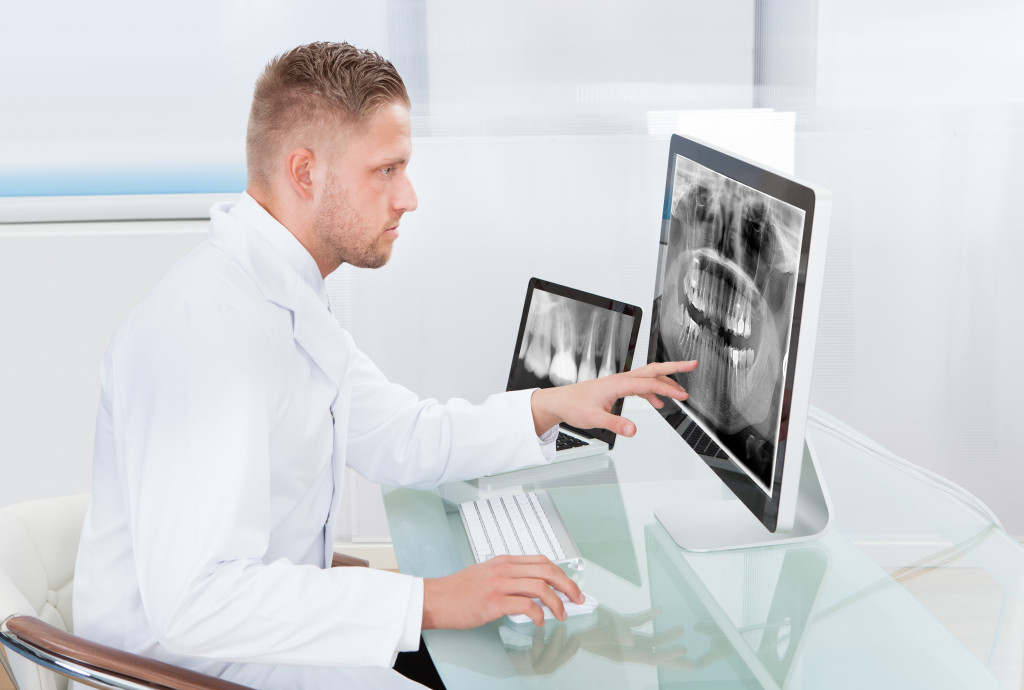The developments in medical technology have been nothing short of miraculous over the past few decades. Among other things, this has led to more accurate and earlier diagnoses of various diseases and conditions. This is especially true for states that used to be very difficult to detect, such as cancer. In this article, we will explore some of the latest diagnostic technologies and how they are helping doctors to catch diseases earlier than ever before.
Sophisticated Imaging Techniques
One of the most critical advancements in medical technology is the development of more sophisticated imaging techniques. These techniques allow doctors to get a better look at the inside of the human body without performing invasive procedures. This means that conditions that would have previously been undetectable can now be found and treated early on.
Some of the most popular imaging techniques include MRI, CT, and PET scans. These techniques are often used in combination with each other to get a complete picture of what is going on inside the body.
- MRI (magnetic resonance imaging) uses magnetic fields and radio waves to present images of the body’s interiors.
- CT (computed tomography) scans use X-rays to create detailed images of the inside of the body.
- PET (positron emission tomography) scans use a radioactive tracer to create images of the inside of the body.
These imaging techniques are often used to diagnose cancer, as they can show abnormal growths that might be cancerous. They can also diagnose other conditions, such as heart disease, brain disorders, and digestive problems.
Advanced X-Ray Techniques
In addition to the sophisticated imaging techniques mentioned above, there have also been advances in X-ray technology. These advances have led to the development of new X-ray techniques that are much more sensitive than traditional X-rays.
These new X-ray techniques, such as digital tomosynthesis and spectral imaging, allow doctors to get a clearer picture of the inside of the body. This means that they can better detect abnormalities, such as tumors.
Digital tomosynthesis is a type of X-ray that uses multiple low-dose images to create a three-dimensional image of the inside of the body.
Spectral imaging is a type of X-ray that uses different energy levels to create images of the inside of the body.
Moreover, the new techniques are also helpful in seeing through the delicate and hard-to-reach areas of the body like the mouth. Earlier, the dentists had to wait for a long time to get a clear picture of the teeth, but with the help of this technology, they can take a more precise image in just a single click.

Hence, nowadays, they can perform dental procedures like placing replacement teeth, tooth extraction, root canal, veneers, fillings, etc., with the help of X-rays.
These new X-ray techniques are often used in conjunction with other imaging techniques, such as MRI and CT, to get a complete picture of what is going on inside the body.
Genetic Testing
Another significant advancement in medical technology is the development of genetic testing. This type of testing can be used to identify genes that are associated with specific diseases and conditions. This information can then be used to develop targeted treatments or preventive measures.
Genetic testing is often used to diagnose conditions that run in families, such as cancer, heart disease, and Alzheimer’s disease. It can also determine if a person is at risk for developing certain diseases and conditions.
Molecular Diagnostics
Molecular diagnostics is a type of testing that looks for specific changes in the DNA or RNA of a person’s cells. This type of testing can diagnose cancer, infectious diseases, and genetic disorders.
Molecular diagnostics is often used to identify the specific type of cancer a person has. This information can then be used to develop targeted treatments. Molecular diagnostics can also determine if a person has an infection, such as the flu, or a genetic disorder, such as cystic fibrosis.
Biomarkers
Biomarkers are substances found in the body that can be used to diagnose or predict the presence of a disease or condition. Biomarkers can be found in the blood, urine, or other body fluids. They can also be found in tissue samples.
Biomarkers are often used to diagnose cancer. They can also determine if a person is at risk for developing certain diseases and conditions. Biomarkers can also monitor the progress of a disease or condition.
The advancements in medical technology have led to more accurate and earlier diagnoses of various diseases and conditions. This is especially true for states that used to be very difficult to detect, such as cancer. With the help of all these diagnostic tools, doctors can now catch diseases earlier and provide better treatment.


